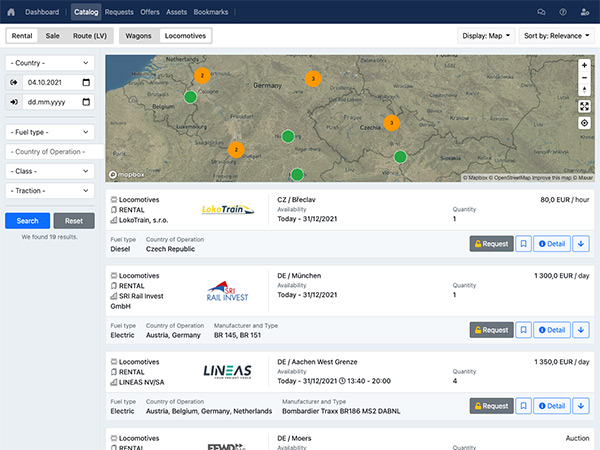Last week RAILMARKET.com published the first part of the interview with Jiri Chladek, Managing Director of Rohlig Suus Logistics for the Czech Republic and Slovakia. In a nutshell, he said:
The war in Ukraine has disrupted global supply chains and caused an energy crisis in Europe, impacting intermodal rail transport. Coal transport had to bypass closed Ukrainian ports and move to tracks that had not been used before, resulting in bottlenecks and congestion. Some customers withdrew from the New Silk Road route. To mitigate market turbulence, Rohlig Suus Logistics has been focusing on diversification in geography, industries served, and means of transport and services offered. The Trans-Caspian Railway route from China to Europe is available, but the transit time is not much shorter than sea transport, and the cost is high. Increases in energy prices have translated into higher rail transport costs, discouraging customers from choosing this means of transport. However, intermodal transport can be cost-effective and eco-friendly, with one load unit and minimized risk of damage to goods. Well-designed intermodal transport is competitive and can be the answer to the shortage of drivers, generating a much lower carbon footprint than road transport. The policy of the European Union is also moving towards reducing road transport in favor of more sustainable alternatives, such as intermodal transport.
There is the second part of the interview:
RM: How competitive is the rail intermodal product nowadays – in the context of other transport modes (sea-freight or road freight)?
Jiri Chladek, Managing Director of Rohlig Suus Logistics for the Czech Republic and Slovakia: The means of transport should be compared in various respects – but above all the costs and time of transport, as well as the current needs of customers. In terms of price, sea freight is the most competitive, followed by rail and finally air freight, but when it comes to transport time, the roles are reversed and, of course, air freight is unrivalled. However, we must not forget that in each of these means of transport we are dealing with a different scale of services. A container ship can transport, for example, 20,000 TEU at a time, i.e. 10,000 40' containers, a train – 45 containers, and an airplane – the equivalent of 2 to 7 containers.
When assessing freight, we must also take into account the ecological aspect. In this respect, rail transport, which generates the smallest carbon footprint, wins indisputably. Geography is also often a decisive factor – not every means of transport is possible everywhere. However, the COVID-19 pandemic and the disruption of global supply chains have accelerated the development of intermodal transport in Europe and North African countries.
RM: What product in terms of digitalisation could make your daily work easier?
Jiri Chladek, Managing Director of Rohlig Suus Logistics for the Czech Republic and Slovakia: In recent years, there has been great progress in the development of technology. We also see it in the TSL industry. Certainly, greater use of AI in terms of visibility and delivery time prediction will contribute to greater transparency of transport processes.
RM: How do you see the future of rail intermodal within Europe and for Euro-Asian traffic?
Jiri Chladek, Managing Director of Rohlig Suus Logistics for the Czech Republic and Slovakia: According to the European Green Deal, zero CO2 emissions are to be achieved by 2050, so I cannot imagine transport without the use of rail. Moreover, in accordance with the assumptions of the White Paper, we should strive to reduce road transport, and thus CO2 emissions and negative impact on the environment. In addition, more and more companies want to conduct their operations in a sustainable and pro-environmental manner, and intermodal freight can ensure this by reducing the negative impact of transport on the environment. Moreover, as I mentioned before, intermodal transport can be crucial in the context of a shortage of drivers in road transport.

